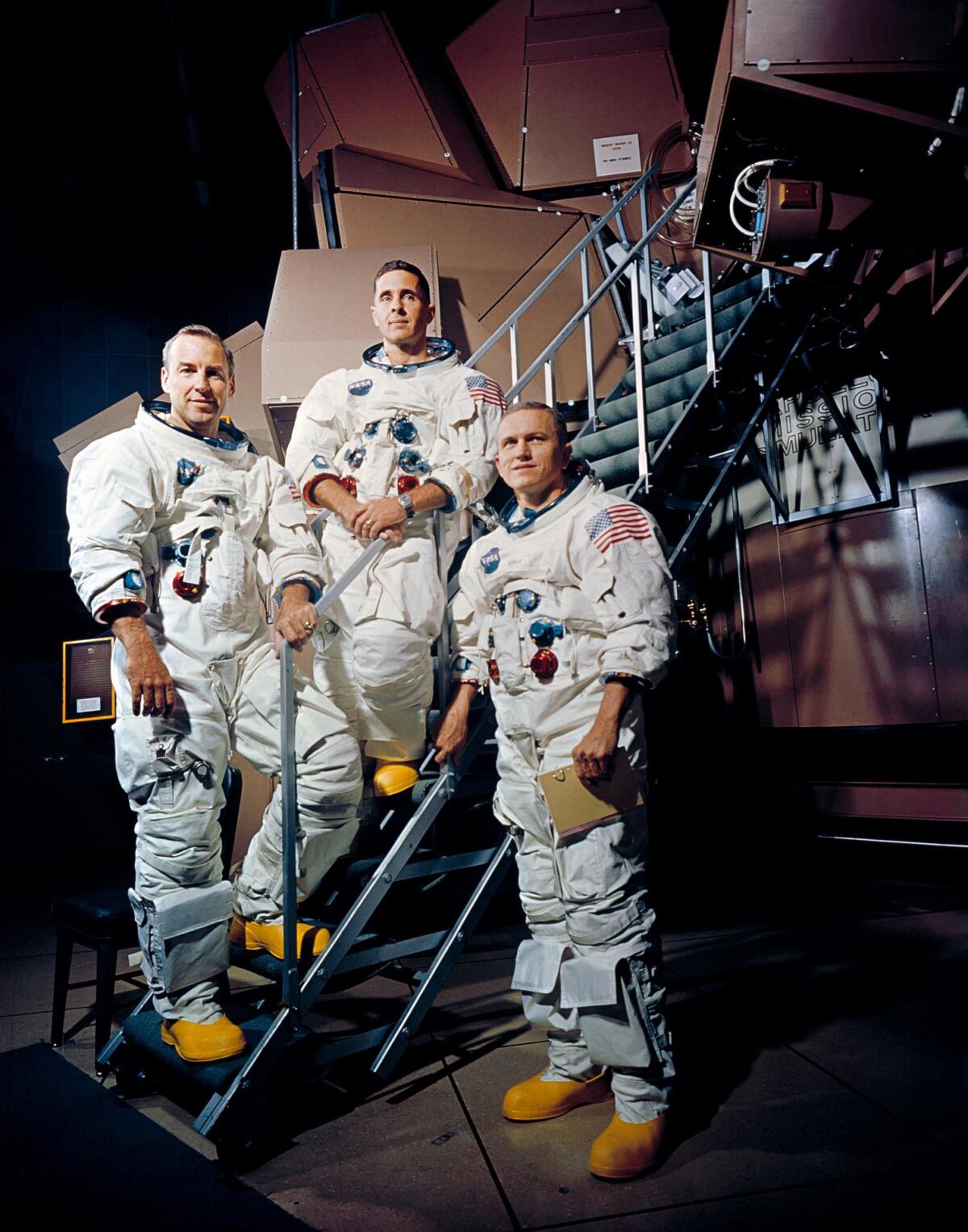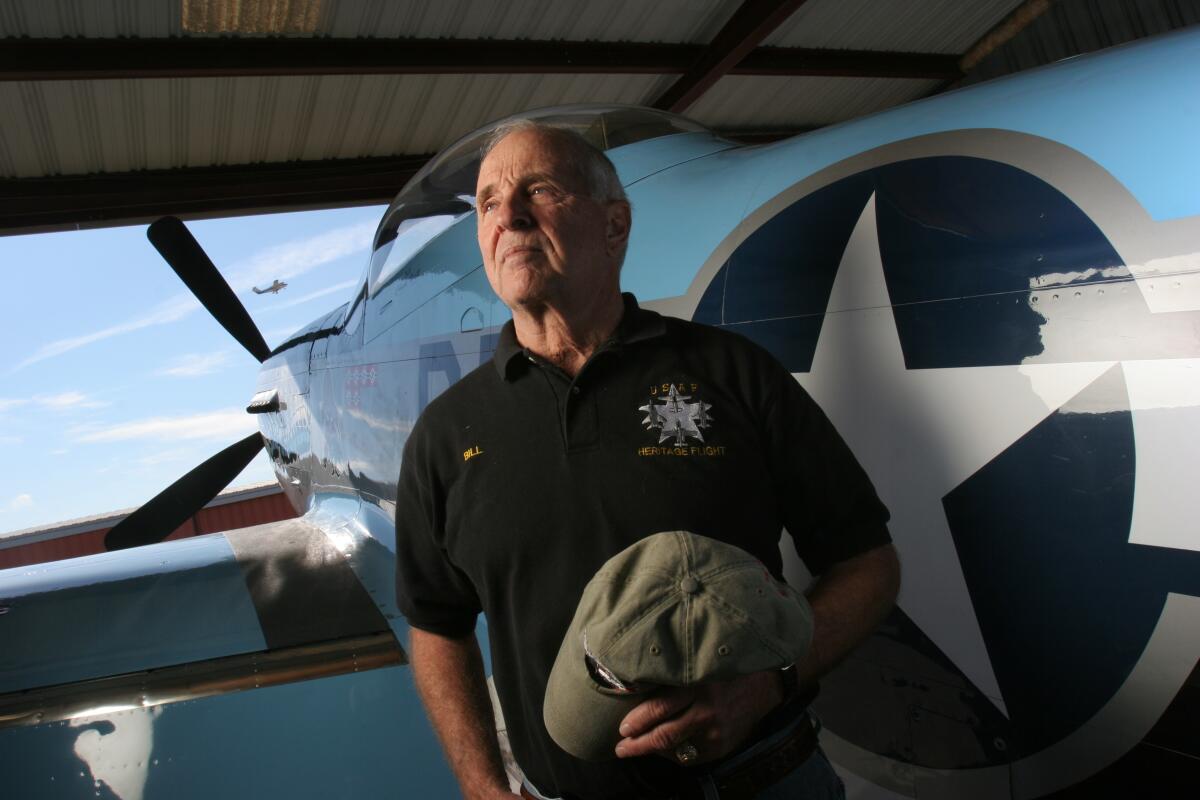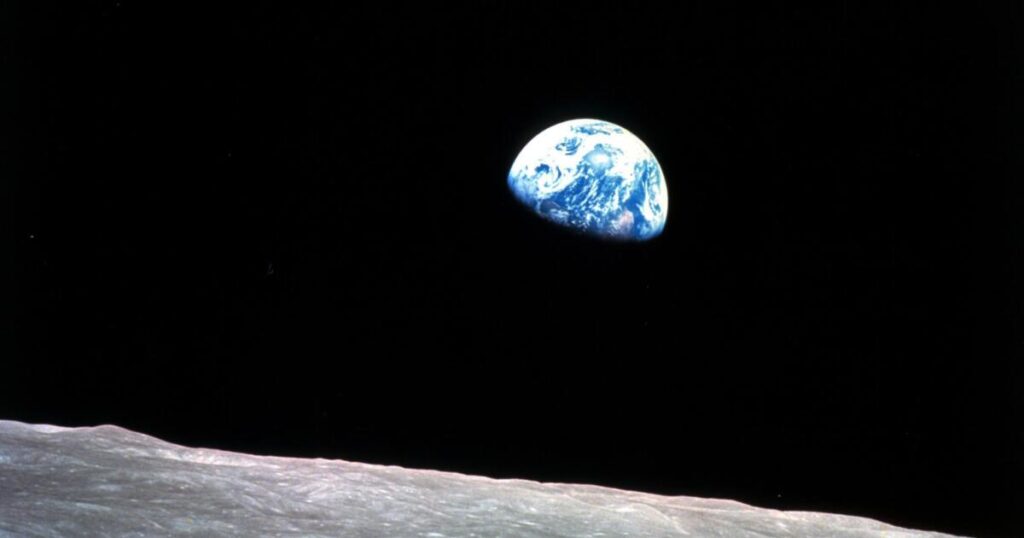Apollo 8 astronaut Bill Anders, one of the first humans to orbit the moon and take the first iconic photo of Earth rising from the lunar surface, flew the plane Friday Killed in crash near San Juan Islands. He is 90 years old.
He was flying alone when the Beechcraft T-34 Mentor crashed into waters near Roche Harbor, Washington, around 11:40 a.m., the Federal Aviation Administration said.
“The family is devastated,” his son, retired Air Force Lt. Col. Greg Anders, told The Associated Press. “He was a great pilot and he will be greatly missed.”
U.S. Coast Guard spokesperson Staff Petty Officer Annika Heschler said a state dive team recovered the pilot’s body after a helicopter and boat search.
The FAA and National Transportation Safety Board are investigating the accident.

Bill Anders (center) and Apollo 8 astronauts Jim Lovell (left) and Frank Borman before the 1968 mission.
(NASA)
On December 24, 1968, Anders and two other astronauts on Apollo 8, Frank Borman and Jim Lovell, became the first people to orbit the moon. Anders read from the Book of Genesis during a live broadcast from space on Christmas Eve.
Anders and his crew were also the first humans to witness the blue Earth rising from the gray surface of the moon.
As the spacecraft rotates, Anders looks out the side window, taking photos of the Earth emerging from behind the moon.
“Oh my God, look at those pictures over there!” he exclaimed in the recorded exchange. “The earth is rising. Wow, it’s so beautiful!
That moment was captured on film and became the iconic photo “Earthrise.” The photo captivated people around the world and became a profound symbol of the environmental movement, showing the fragility of life on Earth amid the vastness of space.
Anders later said that looking out from the spacecraft, the Earth seemed “like a flimsy Christmas tree ornament. I thought to myself, you know, it’s too bad that we don’t treat this like a Christmas tree ornament.”
This photo had a significant impact on society. Environmentalists used the perspective captured in photographs to organize the first Earth Day in 1970.
NASA Administrator Bill Nelson said Anders “provided one of the deepest gifts to humanity that an astronaut can give.”
“He came to the portal of the moon and helped us all see something else: ourselves. He embodied the lessons and purpose of exploration. We will miss him,” Nelson wrote in a social media post.
The International Astronomical Union named a crater on the moon “Anders’ Earthrise” to commemorate the 2018 photo.
at NASA video interview In his later years, Anders reflected on how viewing the Earth from this perspective affected his thinking about people and the Earth.
“It’s really too bad, you know, that we’re firing missiles and rockets and things like that at each other in this little place that we call home. This is our only home in the universe,” he said. “It’s a shame we didn’t treat it a little better.”
When he took this photo with his Hasselblad camera, he saw that the Earth appeared not above the moon, but to the side of the moon. In the original orientation of the photo, the moon is on the right. But the image is usually framed with the moon’s surface at the bottom, making the Earth appear to be rising.
Anders said in an interview that the photo “gave a boost to the environmental movement.”
“It helps point out that the Earth is not only fragile, but also very finite,” he said. “All the views of Earth from the moon make humans… realize that we’re all crammed into a very small planet. We’d better treat it and ourselves better, or we won’t be here for long .
Anders was the lunar module pilot on the Apollo 8 mission. In a 1997 interview about the space program, he said before the flight, he guessed “we had a one-in-three chance of successfully completing the mission.”
William A. Anders was born in Hong Kong in 1933 to a military family. His father was a U.S. Navy officer.
Anders attended Grossmont High School in El Cajon, San Diego County. He went on to attend the Naval Academy and then commissioned with the Air Force.
He retired from the Air Force Reserves as a major general. But he never stopped flying, even decades after his return from space.

Anders at Ramona Airport in San Diego County in 2006.
(John Gastard/San Diego Union-Tribune)
After Apollo, Anders forged an executive career that spanned the public and private sectors. Known for his abrasive manner and rigorous attention to detail, he served as executive secretary of the National Aeronautics and Space Council, a member of the Atomic Energy Commission and the first chairman of the Nuclear Regulatory Commission.
He later served as ambassador to Norway, vice president of General Electric Co., and executive vice president of Textron Corporation. expenditure.
In 1996, Anders and his wife co-founded the Heritage Flight Museum, now located next to Skagit Regional Airport in Burlington, Washington. Director) flew two T-34 aircraft in a formation demonstration over the museum.
Anders and his wife, Valerie, divide their time between Washington, D.C., and San Diego’s Point Loma community. He is survived by six children and a dozen grandchildren.
Former astronaut and Arizona Senator Mark Kelly said that through this “Earthrise” photo, Anders “forever changed our view of the Earth and ourselves.”
“He inspired me and generations of astronauts and explorers. My heart goes out to his family and friends,” Kelly wrote in a social media post.
The Associated Press contributed to this report.

